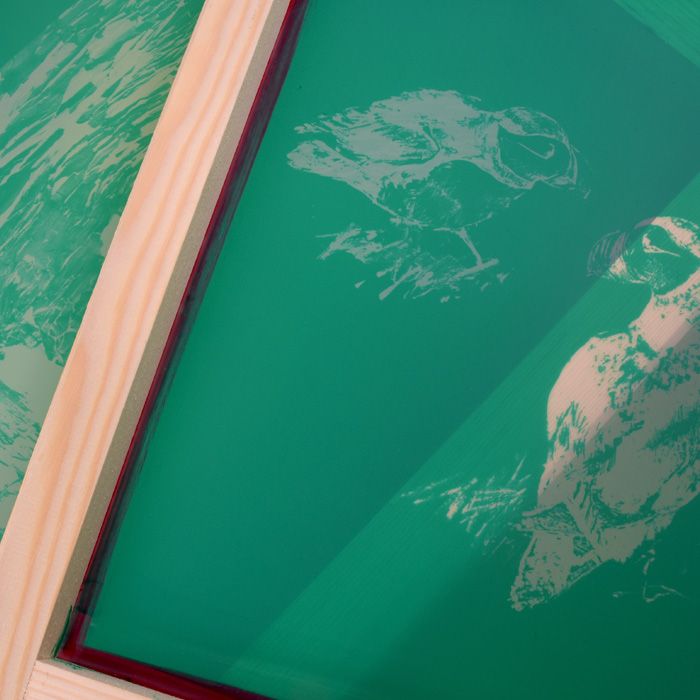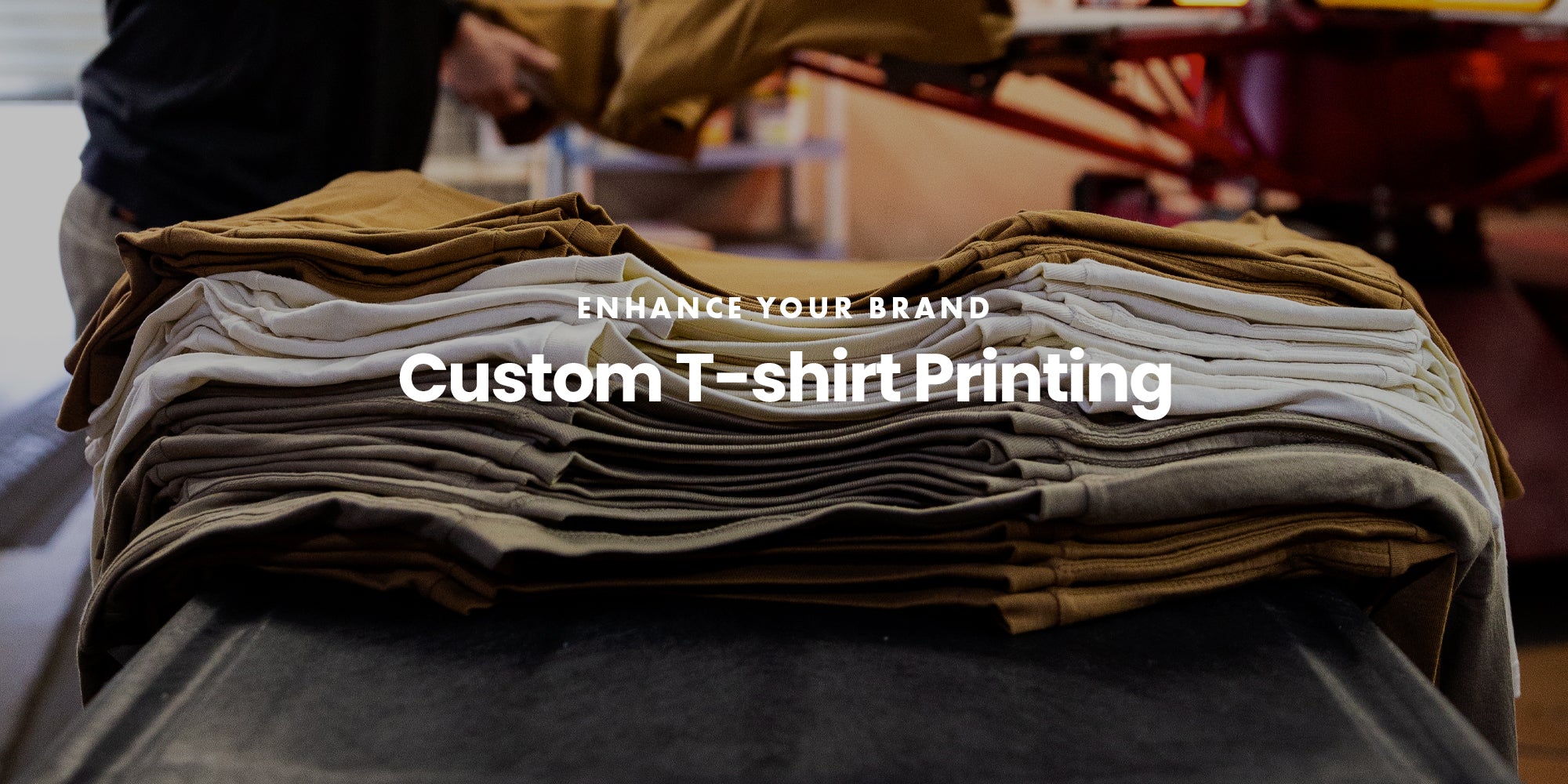Custom Screen Printing for Unique Promotional Merchandise
Custom Screen Printing for Unique Promotional Merchandise
Blog Article
Screen Printing Uncovered: Everything You Need to Find Out About Tee and Garment Printing Strategies
If you've ever before questioned exactly how those lively designs wind up on your preferred tees, you remain in the appropriate place. Display printing is an interesting approach that integrates art with technique, offering endless opportunities for imagination. Recognizing the basics, from equipment to ink selections, can significantly impact your outcomes. All set to check out the vital elements that make display printing an art type? Allow's uncover the details that can elevate your projects.
The Essentials of Display Printing: Exactly How It Works
When you plunge right into screen printing, you'll uncover it's both an art and a scientific research. At its core, screen printing involves producing a stencil, or display, that permits ink to pass through only in details locations.
Following, you'll blend your inks and prepare your printing surface. Setting the display over the material, then utilize a squeegee to press ink via the display onto the garment. This procedure requires precision, as you desire clear, dynamic prints. After printing, you'll cure the ink with warmth, ensuring it follows the material and lasts through washes. Each step is vital, and mastering them will certainly boost your screen printing skills, transforming easy garments into unique, meaningful pieces.
Sorts Of Screen Printing Methods
As soon as you grasp the fundamentals of display printing, it's time to check out the various methods that can raise your layouts. One popular technique is typical screen printing, where ink is pressed through a stenciled display.
One more choice is plastisol printing, understood for its longevity and brilliant colors, making it a favored for numerous brand names. Experiment with halftone printing to develop slope effects and detailed designs.
Important Tools for Screen Printing
To achieve magnificent outcomes in display printing, having the right devices is basic. You'll need a durable display printing frame, which holds the mesh that transfers your layout onto the garment. Next, spend in high-grade squeegees; these are essential for applying ink uniformly across the screen.
Selecting the Right Inks and Materials
When selecting inks and materials for screen printing, you need to take into account the type of ink that works finest for your job. Think of material compatibility to guarantee your designs look terrific and last long. Also, explore eco-friendly ink options to make your printing procedure more sustainable.
Kinds of Display Inks
Selecting the ideal screen ink is vital for accomplishing vibrant, durable prints that fulfill your job's needs. There are numerous kinds of display inks to take a look at. Plastisol ink is popular for its versatility and convenience of use, providing exceptional color opacity on dark textiles. Water-based ink, on the other hand, offers a softer feeling and is environmentally friendly, making it perfect for those looking to decrease their ecological impact. Release inks eliminate dye from the fabric, resulting in a soft, classic appearance however require particular handling. Lastly, specialized inks, such as glow-in-the-dark or metallic, can add distinct impacts to your designs. Examine your task demands and select the ink that straightens finest with your desired outcome.

Material Compatibility Factors To Consider
Comprehending material compatibility is important for attaining high-quality display prints, specifically since various products respond uniquely to numerous inks. When choosing inks, take into consideration the textile kind-- cotton, polyester, or blends. For cotton, water-based inks work well, offering softness and breathability. Polyester, on the various other hand, usually calls for plastisol inks for far better bond and lively shades. You might require to make use of a combination of both types if you're publishing on blends. Constantly check your inks on example textile to guarantee they stick appropriately and maintain shade integrity. In addition, maintain in mind that fabric weight and appearance can impact the final outcome, so choosing the best ink and product combo is vital for your task's success.
Eco-Friendly Ink Options
Environment-friendly inks are ending up being a popular option for display printers who intend to reduce their ecological impact while preserving quality. When picking inks, think about water-based inks, which are less unsafe and less complicated to cleanse up compared to typical solvents. These inks bond well with fabrics, supplying lively results without harmful chemicals. You might additionally discover eco-solvent inks that make use of fewer volatile organic substances (VOCs), making them a safer option for both your health and the world.
In addition, seek inks made from eco-friendly sources, such as soy or vegetable-based alternatives. By picking the appropriate inks and products, you'll not only produce additional info sensational styles yet additionally add to a much more lasting printing process. Make the button, and your prints will certainly show your commitment to the setting!
Preparing Your Layout for Screen Printing

File Layout Demands
To assure your style looks sharp and lively on textile, you'll need to pay close attention to submit layout requirements for screen printing. Make sure your layout has a clear history to protect against unwanted white sides on your prints. Maintain color settings in mind; CMYK is common for display printing, so transform your RGB develops appropriately.
Color Separation Techniques
Shade splitting up is a crucial step in preparing your layout for display printing, and grasping it can greatly improve your print high quality. You'll need to break your design into specific shades, as each color requires a different screen throughout printing. This accuracy not just assures exact shade depiction yet also streamlines the printing process.
Resolution and Size
Achieving the very best outcomes in screen printing starts with guaranteeing your layout has the best resolution and dimension. Ideally, your artwork needs to go to the very least 300 DPI (dots per inch) for sharp, clear prints. If you utilize reduced resolution, your end product might look pixelated and less than professional.
When it concerns size, consider the dimensions of your print location. Layout your art work to match the last print dimension, preferably developing it in the real measurements you'll be publishing. By doing this, you'll prevent any kind of unforeseen scaling concerns.
Constantly check your design in both vector and raster styles. Vector graphics can be scaled without shedding index top quality, making them optimal for display printing. Preparing appropriately will guarantee your style looks remarkable on every garment!
Step-by-Step Display Printing Refine
Screen printing is a vibrant process that enables you to develop vivid styles on various surfaces. To start, you'll require a display, emulsion, and your picked ink. Initially, prepare your screen by cleansing it thoroughly. Next off, apply the solution equally and let it completely dry in a dark area. Once completely dry, expose your screen to light with your design put on it, which will solidify the emulsion where the light hits, producing a stencil - screen printing kit.
Pour ink onto the display and make use of a squeegee to press the ink through the stencil onto the textile. Raise the display very carefully and let the print completely dry. You have actually efficiently screen printed your layout.
Tips for Effective Screen Printing Projects
While you're diving into your display printing jobs, bear in mind that prep work is vital to success. Begin by gathering all your materials-- inks, garments, squeegees, and displays. A tidy workspace assists prevent undesirable mistakes, so clean before you begin.
Following, confirm your art work is high-resolution and effectively sized for your garment. Examine your display for correct exposure and tidy it thoroughly to prevent spots. When mixing your inks, comply with the producer's standards to achieve the ideal consistency.
During printing, use even stress with your squeegee for constant results. Do not hurry; take your time to validate each print fulfills your standards. After printing, allow your garments dry completely prior to dealing with or packaging them.
Last but not least, always keep an example of your benefit future recommendation. In this manner, you can evaluate your development and boost your techniques gradually. Happy printing!

Frequently Asked Inquiries
Just how Long Does It Require To Set up a Screen Printing Task?
Establishing up a screen printing task generally takes about half an hour to an hour. You'll prepare the displays, mix inks, and change journalism. The moment varies based upon intricacy and experience, so stay arranged!
Can I Print on Different Fabric Types Utilizing the Same Technique?
Yes, you can print on different fabric types using the exact same technique, but you'll need to change your settings and inks. Some textiles absorb ink in different ways, so exploring assurances the most effective outcomes for each and every product.
What Are Typical Errors to Prevent in Display Printing?
When display printing, prevent typical errors like utilizing the wrong ink, ignoring appropriate direct exposure times, or missing pre-press checks. click for info Always test your setup and preserve clean screens to assure high quality outcomes each time.
Exactly How Can I Properly Tidy and Maintain My Display Printing Tools?
To appropriately clean and keep your screen printing equipment, you should routinely wash displays with proper solvents, inspect squeegees for wear, and assure all tools are saved completely dry and dust-free. Uniformity stops costly fixings and boosts efficiency.
Is Display Printing Eco-friendly Contrasted to Other Methods?
Screen printing can be a lot more ecologically friendly than various other techniques, especially if you make use of water-based inks and eco-conscious materials. By selecting lasting materials and techniques, you lower waste and reduce your influence on the planet.
Display Printing Uncovered: Whatever You Need to Know Regarding T-Shirt and Garment Printing Strategies
At its core, display printing involves creating a pattern, or screen, that permits ink to pass via only in certain locations. Setting the display over the fabric, after that utilize a squeegee to press ink via the display onto the garment. One popular technique is standard display printing, where ink is pressed via a stenciled screen.When choosing inks and materials for screen printing, you need to take into account the type of ink that works best for your job.
Report this page